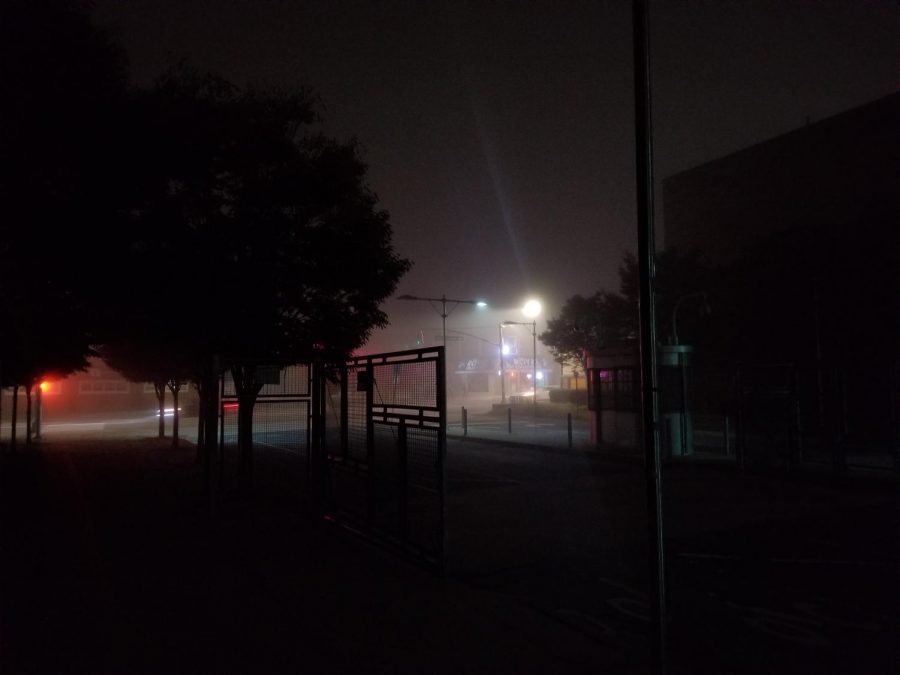Not Scary: A Review of ‘Truth or Dare’
Maybe it is the early sundowns. Perhaps it is the crisper and colder nights. But something about the fall season that makes it just right for movie watching. In particular, there is one genre of movies that I highly recommend during the fall season — horror movies.
Whether you want to jump off of the couch or reach out to your pillow, close your eyes or cover your ears, horror movies present a rich variety of genres and sub-genres to reveal every hidden fear that you were not sure that you had, and provide a convenient excuse to hold that special someone’s hand when you both need it most. Yet, for every cinematic masterpiece, there is always a terrible disappointment.
A bad horror movie is like a stale cookie: it might look tasty from the outside, but once you bite into it, you are immediately struck by the awful taste hiding inside. You might continue to chew it, hoping that perhaps your original judgement was wrong, that this is simply a diamond in the rough, only to find no redemption. You are left with an aftertaste worse than the cookie itself. Truth or Dare (2017) is one of those movies.
Bad horror movies do not necessarily need to be, well, bad. They may fail at their intended purpose of scaring the viewer, but unintentionally succeed elsewhere. Take The Gingerbread Man (2005) as an example: the movie features low budget special effects, a ridiculous plot line, and a gingerbread man as the main antagonist. While this movie completely fails to instill any actual fear in the viewer, it is an enjoyable experience, nonetheless. Watching a pistol-wielding gingerbread man rampage with a special effects budget smaller than what our current president paid in taxes in the fiscal year of 2017 is fun for friends and family alike. But when a bad horror movie is truly bad, it results in a sour taste that stays in your mouth for days after the credits roll. So what separates ‘good’ bad horror movies from truly terrible ones, and what should eager filmmakers do to avoid them?
Plot is the most important element of any story. With an incoherent plot, you have an incoherent film, and bad plot choices reverberate throughout the rest of the story as it continues. Horror movies can generally push the limits on plot structure as they deal with the supernatural, involving concepts like ghosts and demons that do not have set rules to abide by. However, good horror movies (as any good movies) still abide by important elements such as character development and basic logic. Truth or Dare (2017) does not.
The movie starts abruptly with a scene twenty years in the past, with two unidentified characters struggling in an abandoned house that serves as the main setting and source of danger for the next ninety minutes of the film. These characters are not formally introduced, but we are given a general understanding of the danger that they face: a violent game of truth or dare led by some evil spirit, where they are forced to undergo dares. The opening scene is confusing and chaotic, and raises questions which are barely answered later in the film. What is stopping them from simply not doing the dares? What is the purpose behind the dares? Who (or what…) is making them?
As the plot unfolds, none of these questions are really answered. The source of the dares is not identified beyond some sort of malignant spirit, with no motive other than simply enjoying the fear of others. This malicious motivation at least has potential for development throughout the film, but no such development is ever to be found. The spirit is also apparently omnipotent, being capable of exerting its power anywhere, and is not given any weakness or shortcoming beyond the possibility of ‘outsmarting it in its own game’. The latter provides some hope for the plot, the thought that maybe, just maybe, the characters will be able to outplay the spirit in a creative or interesting way that leads to a satisfying conclusion, or at the very least attempt to do so before failing in a crushing manner.
None of this ever occurs. The characters devise simple and boring plans for two or three dares, with no centralized objective besides ‘perhaps maybe we’ll live.’ This uninteresting goal is then worsened by the fact that they fail to actually outsmart the spirit to any significant extent, and the spirit is neither satisfied nor defeated.
Worse so however, is how throughout the nearly 90 minutes of film, the plot fails to develop characters well enough to attach any emotional weight to their actions and decisions. The eight main protagonists in the film serve as an example of choosing quantity over quality, as there is just too much going on in the wide array of personalities and interpersonal relationships. This results in the character development in a ninety minute film being split up between eight people, each receiving a fraction of what such a movie requires.
Throughout the last hour of failed truth or dares, the viewer is subjected to a myriad of gruesome scenes that are uncomfortable to watch. Without a coherent plot to give justification for these scenes to occur, nor any weight built up through character development behind the gore, it is nearly meaningless. Rather than yelling out in fear, you find yourself cringing as you watch an actor chop off this, or saw off that. The movie is summed up in the word “cringe.” Whether it is the poor writing or the unneeded violence that makes you cringe, this movie is an uncomfortably bad experience that leaves a terribly poor aftertaste for the viewer. Gore does not always equal scary, and it certainly does not make up for a failing plot; Truth or Dare (2017) flails around with both.











